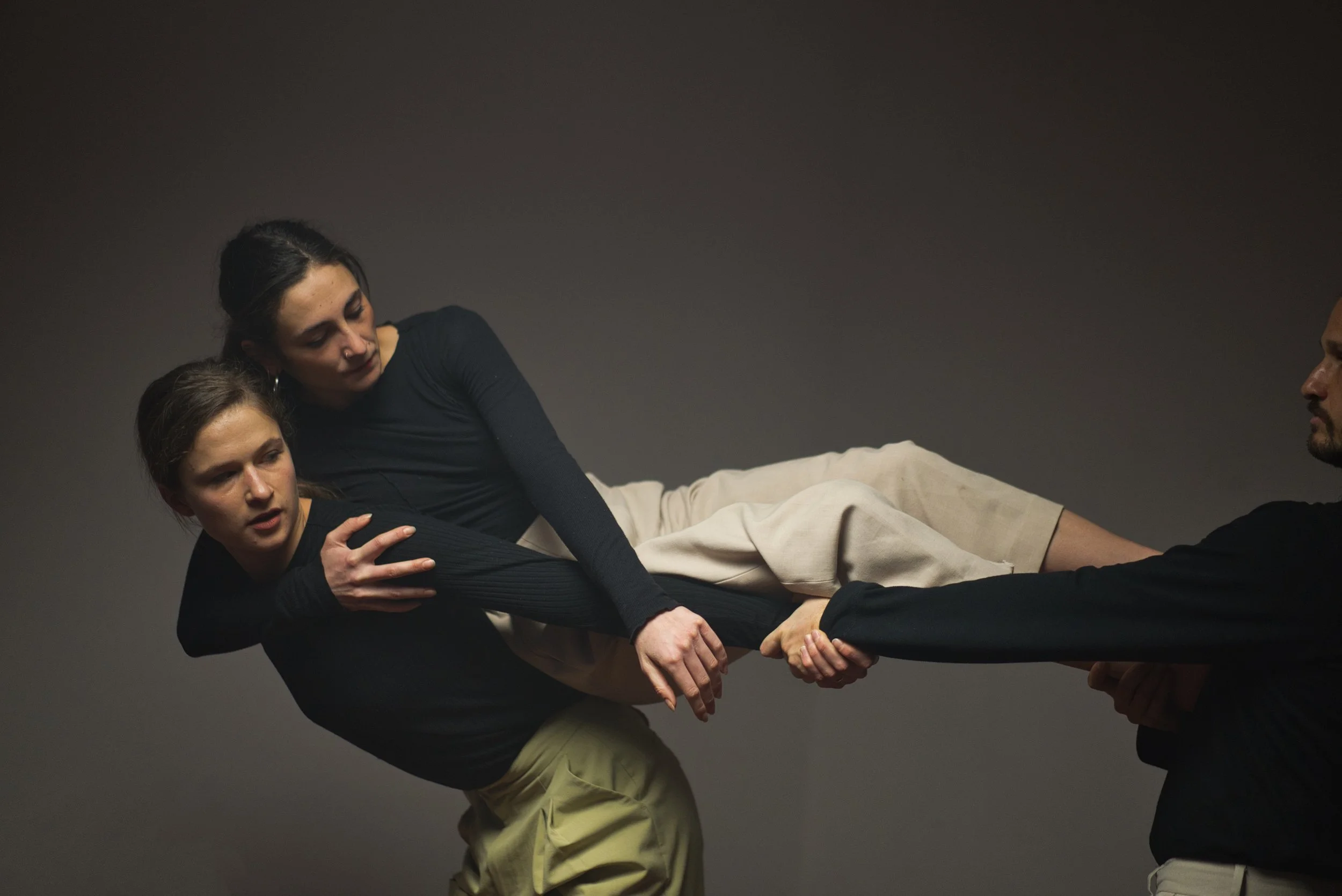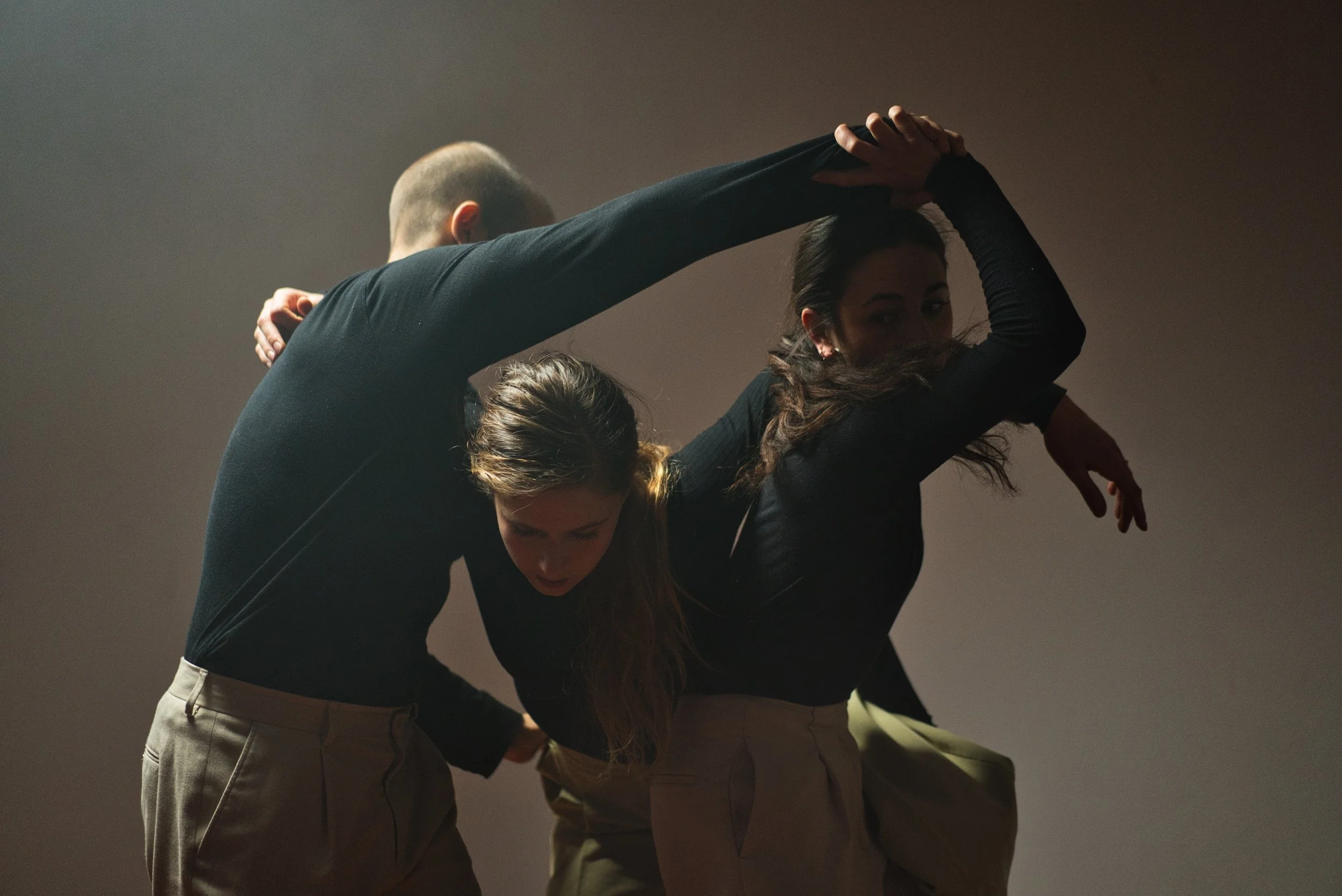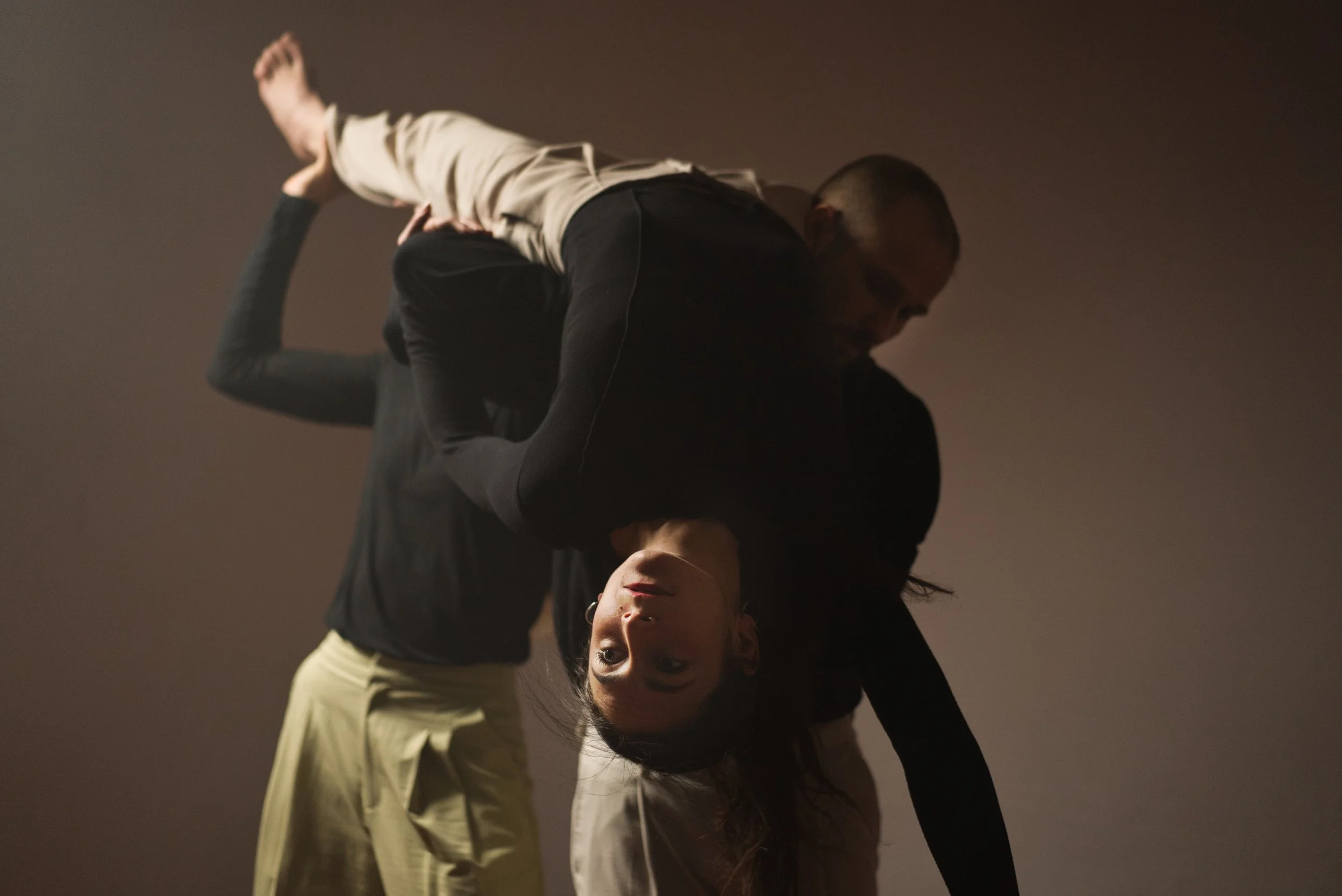Confining subjects to such a small area makes freedom a concrete reality rather than an abstract idea. The limits of one person's liberty become physically and immediately clear. History shows us that options like terror, domination, and the seizure of space are always possible. However, the dancers in Vulneri demonstrate a different, more constructive path: one built on mutual awareness and support.
The human tendency to expand into space—to occupy, conquer, and push the boundaries of one's own freedom—is often disguised as a natural impulse or a necessity for survival. Yet, behind this urge often lies the illusion that freedom exists only when a space is completely under our control. Vulneri is not merely an observation of physical crowding, but a symptom of an ideological paradigm: the assumption that a surplus of others automatically means a deficit of freedom.
Living in a society, in the world, means constantly sharing space with others. Freedom, then, is not an area of arbitrariness and endless horizons, but is rather confined precisely by the other who inhabits the same limited space. Meanwhile, the world population is growing, which calls for questions such as: where exactly does the freedom (space) of one meet the freedom (space) of another? How large is the space in which a subject can settle, occupy it, and in which they decide, invent, think, are?
In her work Vulneri, Anamaria Klajnšček tackles this question on a physical, material level—she places three dancers into one cubic meter of space. There they cohabitate, coexist, they share this space, and yet always, precisely within this limitation, they search for freedom. The author introduces into this space techniques of movement, dance, and other somatic practices that she has been developing for the last seven years: acrobatic circus, acroyoga, contact, the collaboration of bodies, and the exchange of roles between them.
The cohabitation of subjects in an extremely small space de-abstracts the concept of freedom. The boundaries between the freedom of one body and another are here perfectly clear, tactile. While terror, subjugation, and the imperialist expropriation of space and freedom are always an option, as is known from social history (and the present), the dancers in Vulneri point to another real possibility, namely that of sensibility and solidarity. This, however, calls for a full understanding of the concept of cohabitation. Here, it does not mean a structure composed of autonomous bodies that imagine freedom and even insatiably appropriate space, but rather it necessarily demands a delicacy of movement (that is, of thought), a plasticity of bodies (that is, of thought), and cooperation between bodies. Because if two of the three fail in this one cubic meter of space, if the forces of power relations destroy them, the third is simply left alone. But does being alone even still contain the concept of freedom?
CREDITS
Author: Anamaria Klajnscek
Performed by: Anamaria Klajnscek, Kristýna Peldová, Beno Novak
Costumes & Scenography: Gabriela Lotaif
Producer: Žiga Predan
Production: Pekinpah
Supported by: Republic of Slovenia, Ministry of Culture and City of Ljubljana, Department for Culture
PREMIERE
5th February 2026, Spanski borci, Ljubljana, Slovenia
Anamaria Klajnšček (1996) is a Slovenian dancer and choreographer, working primarily in Spain. She is the recipient of the Ksenija Hribar Award for a promising dancer (2021). She completed her training in Ljubljana and later studied at the Academy of Theatre and Dance in Amsterdam. She worked with the TanzMainz dance ensemble in Germany. She is currently involved in various dance projects with choreographers such as Roser Lopez Espinosa, Pere Faura, Žigan Krajnčan, Guy Nader and Maria Campos. In a collaborative duet with Magí Serra, COSSOC, she premiered her latest work, the dance–vocal solo ONA, in 2022.
Beno Novak (Kranj, 1991) is a dancer, choreographer and teacher. After graduating from the Art Gymnasium SVŠGUGL, he graduated from SEAD in Salzburg and is completing his master's degree in choreography at the Royal Conservatory in Antwerp. He has danced in award-winning international companies, such as the Gary Clarke Company, and has collaborated with numerous established choreographers. In 2023, for his participation in the performance VSTAJENJE 2.0 (Pekinpah, 2022), he received the award for best performance at the Gibanica Biennale and the Ksenija Hribar Award for a promising artist. He is the executive director of the Kaleidoscope Festival.
Kristýna Peldová is a dancer, teacher, and improviser. Her professional and personal path has been shaped mainly by the exploration of instant composition and performance improvisation. She graduated in dance/pedagogy from the Duncan Centre Conservatory in Prague. Later, dance led her to Belgium, where she completed her BA studies at the Royal Conservatory of Antwerp. During her studies, she had the opportunity to collaborate with choreographers such as Jan Martens, Agostina D’Alessandro, Stefan Dreher, Elias Lazaridis, Marta Coronado, and Renan Martins.
©Yaris Stepanov





